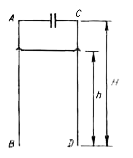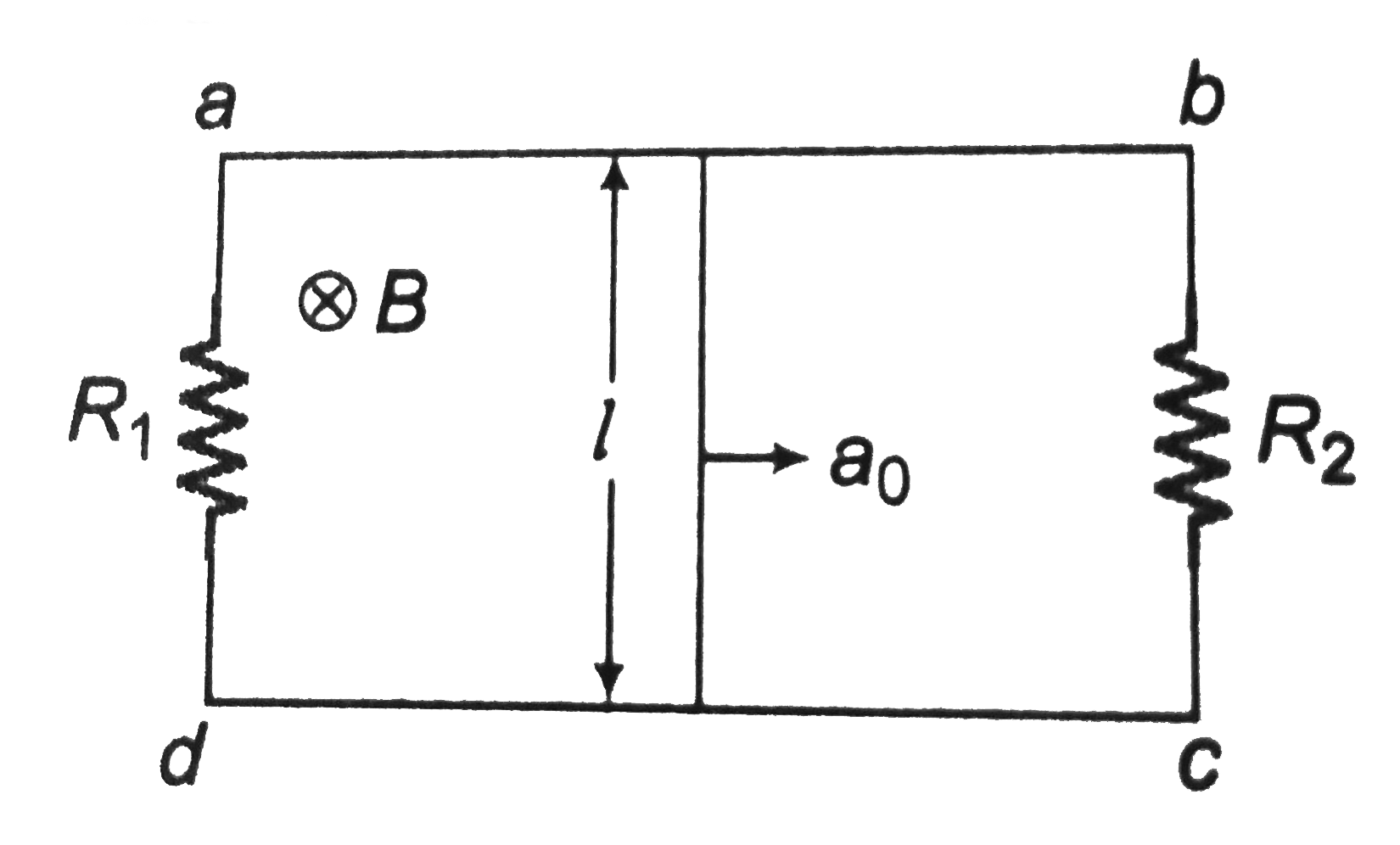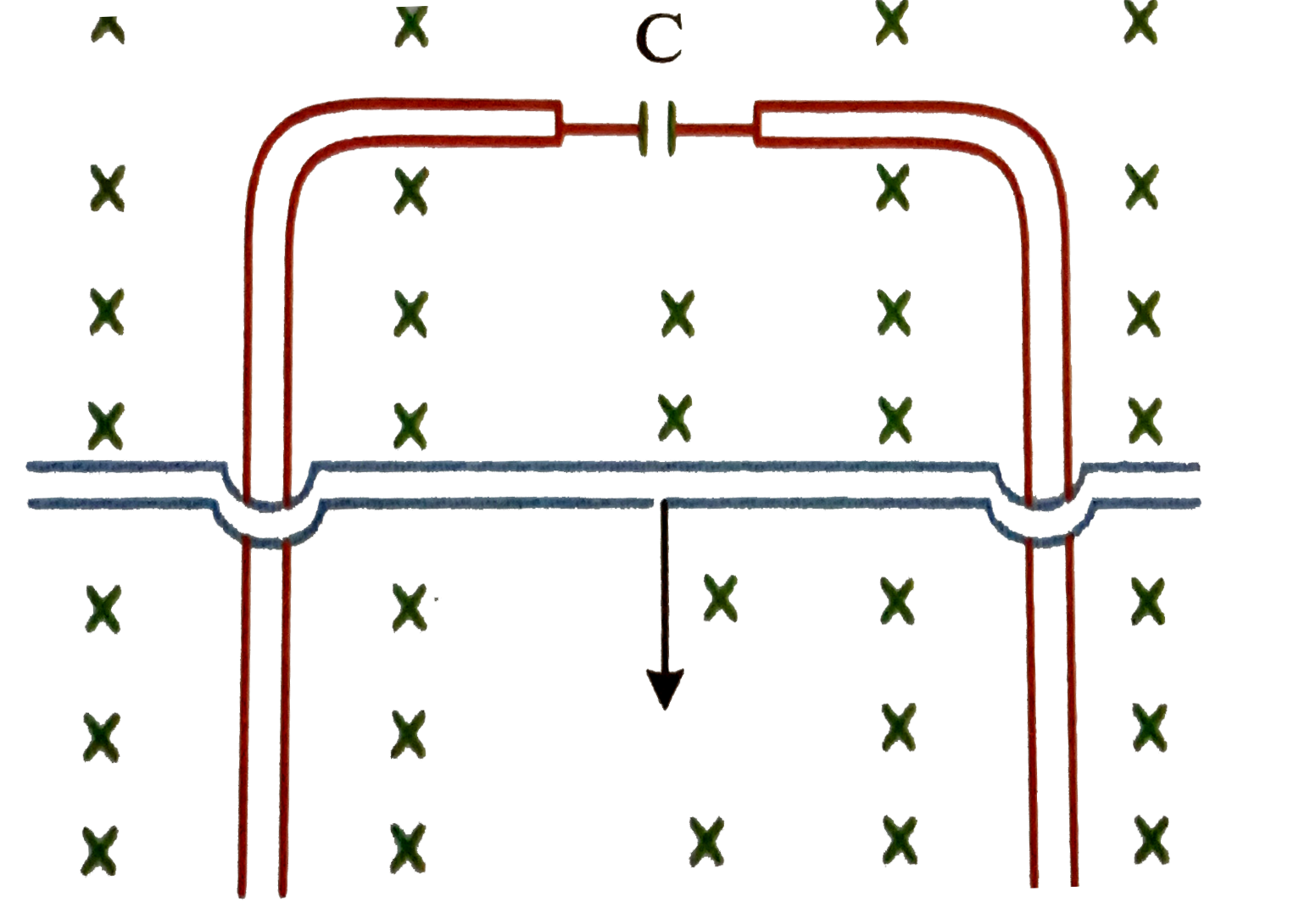A conductor of length I and mass m can slide without friction, but with an ideal electrical contact, along two vertical conductors AB and CD connected through a capacitor (Fig. 30.2). Perpendicular to the plane of the figure a uniform magnetic held of induction B is set up. Find the voltage across the capacilor plates as a function of h. 
The correct Answer is:△ϕ=ε=Bl√2g(H−h).
Step by step video solution for A conductor of length I and mass m can slide without friction, but with an ideal electrical contact, along two vertical conductors AB and CD connected through a capacitor (Fig. 30.2). Perpendicular to the plane of the figure a uniform magnetic held of induction B is set up. Find the voltage across the capacilor plates as a function of h. by Physics experts to help you in doubts & scoring excellent marks in Class 12 exams.
समान प्रश्न
A loop is formed by two parallel conductors connected by a selenoid with inductance L and a condutcing rod of mass which can freely (without friction) slide over the conductors. The conductors are located in a horizontal plane in as uniform vertical magnetic field B .The distance between the conductors is l . At the moment t=0 the rod is impart the initial velocity v_0 directed to the right. find the equation of its motion d(t) if the electric resistance of the loop is negligible
07:07View SolutionTwo metal bars are fixed vertically and are connected on the top by a capacitor C . A sliding conductor of length land mass m slides with its ends in contact with the bars. The arrangement is placed in a uniform horizontal magnetic field directed normal to the plane of the figure. The conductor is released from rest. Find the displacement x(t) of the conductor as a function of time t.
03:38View SolutionA rectangular loop with a sliding conductor of length l is located in a uniform magnetic field perpendicular to the plane of loop. The magnetic induction perpendicular to the plane of loop Is equal to B. The part ad and be has electric resistance R1 and R2, respectively. The conductor starts moving with constant acceleration a0, at time t=0. Neglecting the self-inductance of the loop and resistance of conductor. Find

(a) the current through the conductor during its motion.
(b) the polarity of abcd terminal.
(c) external force required to move the conductor with the given acceleration.06:13View SolutionA conductor of length I and mass m can slide without friction, but with an ideal electrical contact, along two vertical conductors AB and CD connected through a capacitor (Fig. 30.2). Perpendicular to the plane of the figure a uniform magnetic held of induction B is set up. Find the voltage across the capacilor plates as a function of h.
View SolutionA conductor of length l and mass m can slide without any friction along the two vertical conductors connected at the top through a capacitor. A uniform magnetic field B is set up ⊥ to the plane of paper. The acceleration of the conductor
 05:31View Solution
05:31View SolutionA loop is formed by two parallel conductors connected by a solenoid with inductance L=2H and a conducting rod of mass m=80g, which can freely (without fricition) slide over the conductors. The conductors are located in a horizontal plane in a uniform vertical magnetic field with induction B=4T. The distance between the conductors is equal to l=4cm. At the moment t=0 the rod is imparted an initial velocity v_(0)=2 cm//s directed to the right. Find the amplitude (in cm) for the oscillations of conducting rod, if the electric resistance of the loop is negligible.
03:06View SolutionA loop is formed by two parallel conductors connected by a solenoid with inductance L=2H and a conducting rod of mass m=80g, which can freely (without fricition) slide over the conductors. The conductors are located in a horizontal plane in a uniform vertical magnetic field with induction B=4T. The distance between the conductors is equal to l=4cm. At the moment t=0 the rod is imparted an initial velocity v_(0)=2 cm//s directed to the right. Find the amplitude (in cm) for the oscillations of conducting rod, if the electric resistance of the loop is negligible.
06:16View Solution

